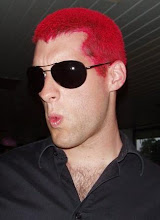7 photographs
Click here to view flickr set.
My notes for Assignment 3 showed that I deliberatly kept the ISO sensitivity low as I had the camera mounted on a tripod and camera shake was not an issue. I was able to use slower shutter speed and therefore did not have to speed up the exposure with a higher ISO. There was one exception and that was the exploding water balloon where I had to up the ISO in order to speed up the shutter to 1/2500 to freeze frame the resulting splash of the water. The problem this produced was the digital noise that can be seen on close examination of the photo.
I did a series of photos to test the acceptable limits of my D5000s ISO sensitivity so avoid the problem of noise. The camera seems to cope well up to ISO 400-800 with very little noise but beyond that it starts to show. The comparison below shows the problem between ISO 200 and 3200:
 I recently utalised the higher sensity when taking some photos of a friend's newborn: she's only a month old and wouldn't stay still! ISO 800 and the fastest shutter speed the wide aperture would allow produced good results, but beyond that the noise was just too much. I also used it to good effect on the Paris Metro when a busker came onboard - ISO 1250 allowed me to get the shutter speed to 1/30 for a good exposure and it resulted in this gem of a photo!
I recently utalised the higher sensity when taking some photos of a friend's newborn: she's only a month old and wouldn't stay still! ISO 800 and the fastest shutter speed the wide aperture would allow produced good results, but beyond that the noise was just too much. I also used it to good effect on the Paris Metro when a busker came onboard - ISO 1250 allowed me to get the shutter speed to 1/30 for a good exposure and it resulted in this gem of a photo!












